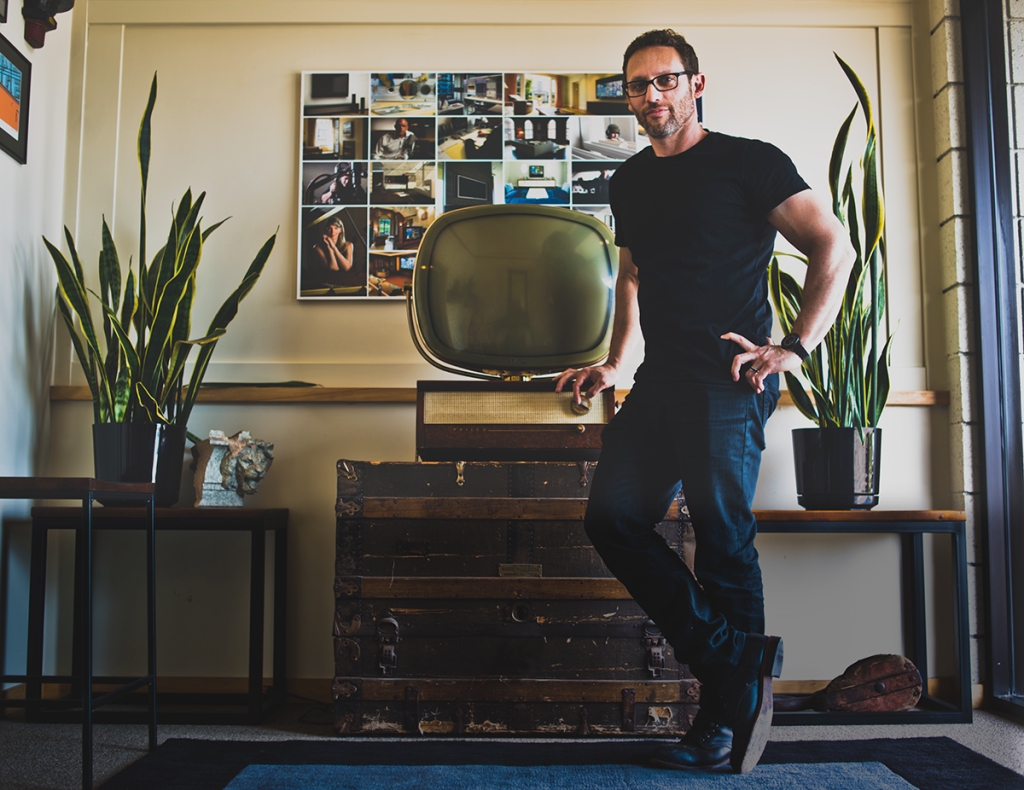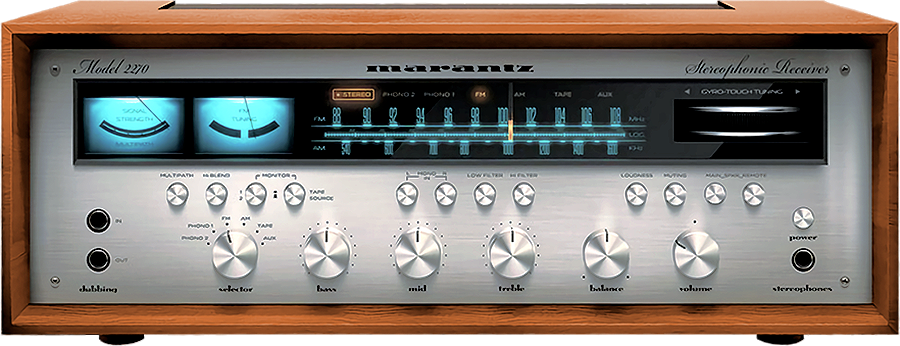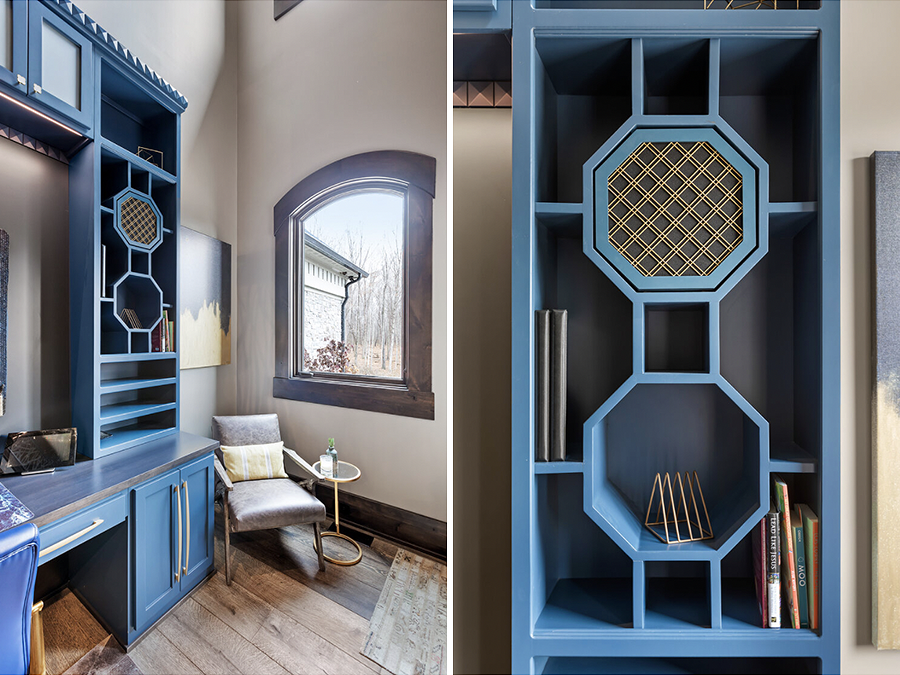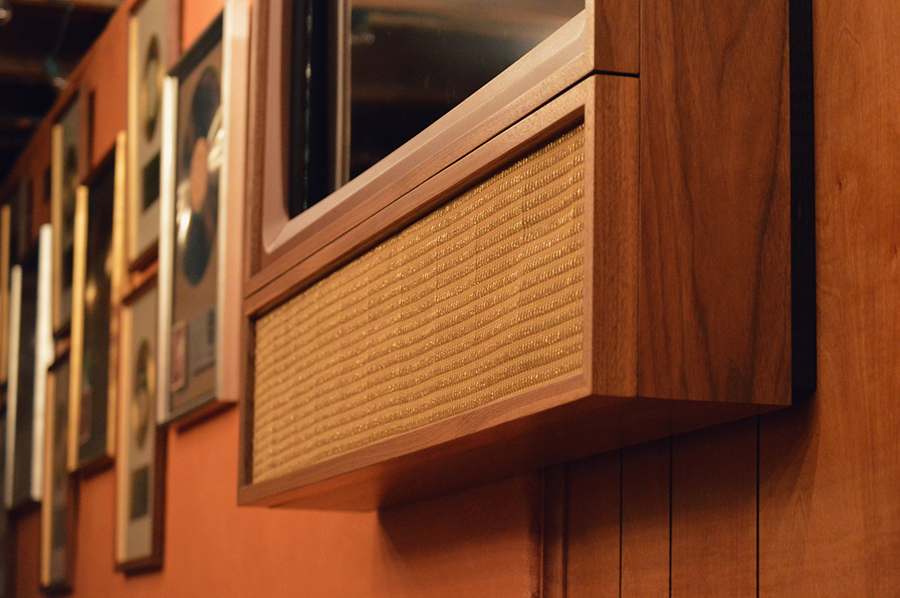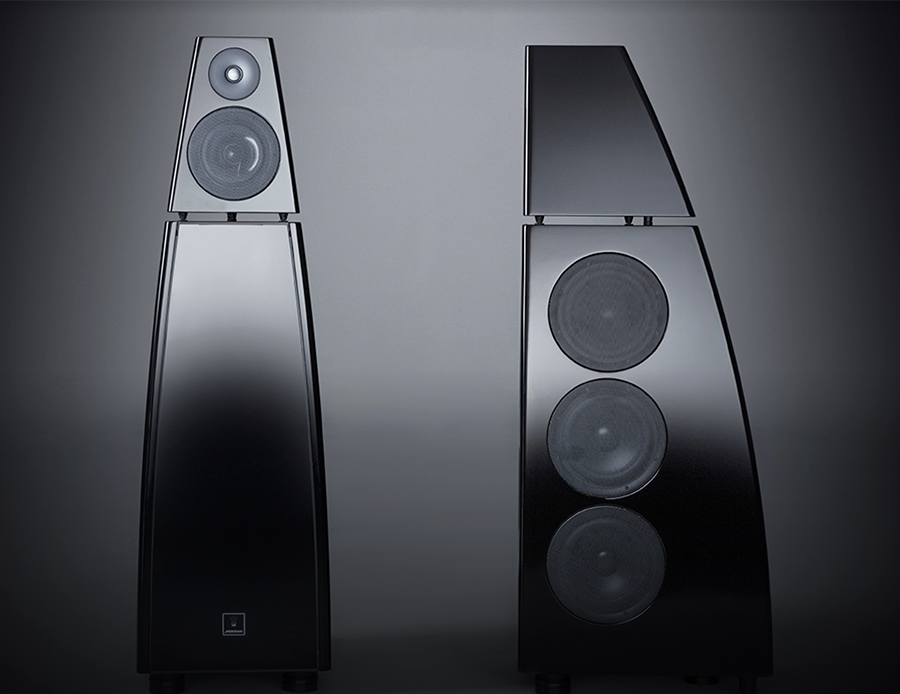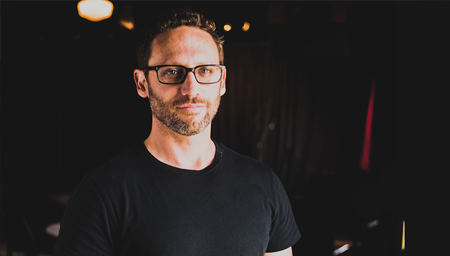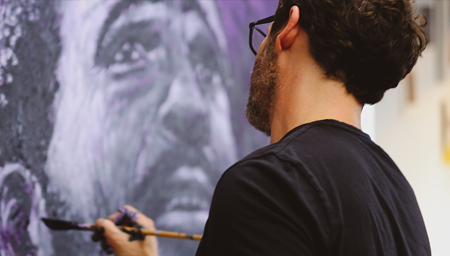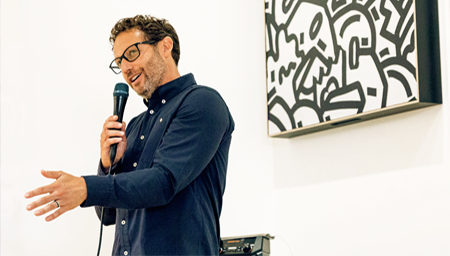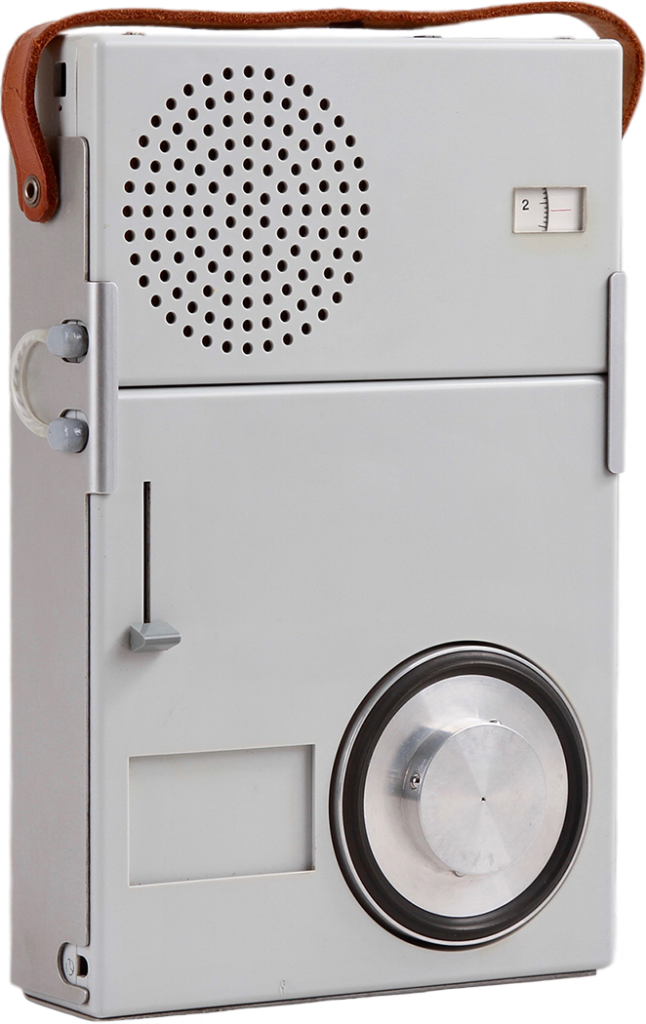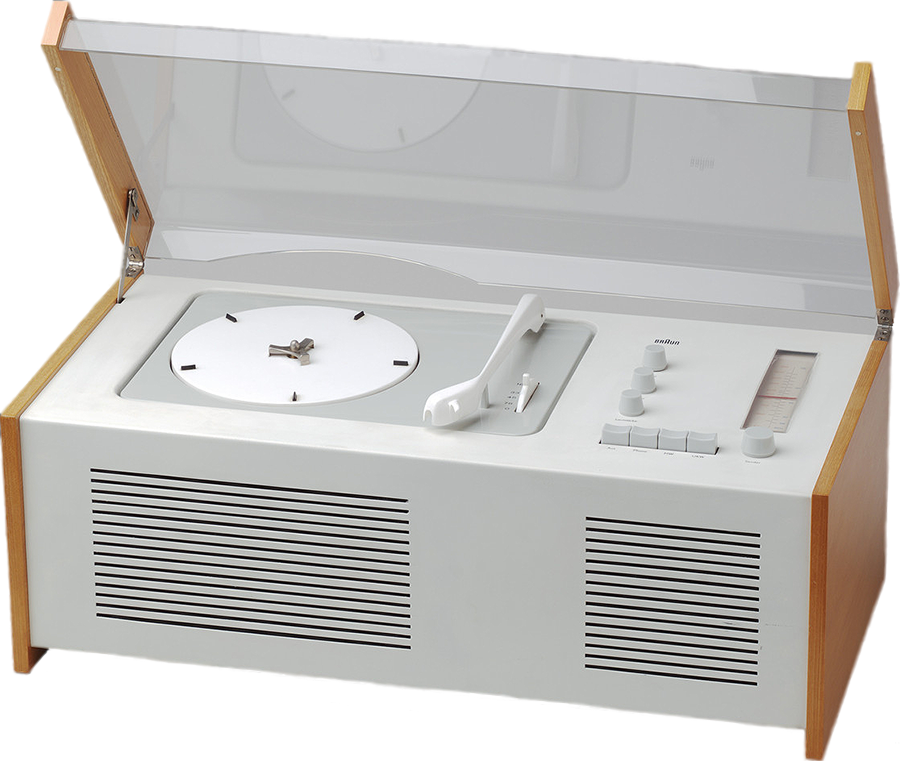“In the ‘40s and ‘50s, you’d buy a console at a department store and it had your record player and your storage and your television in it. It was a piece of beautiful furniture that was a simple centerpiece of your home.”
the Marantz 2270 stereophonic receiver (1971)
above | Leon Speakers’ Edge Media Frame takes on a retro look in this custom design for the legendary Muscle Shoals recording studio in Sheffield, Alabama
below | Meridian’s DSP8000 XE speakers
making fixtures “pop” | rather than hide these Leon Detail Ultima speakers away, adding custom-made braided brass lattice grilles turns them into a distinctive design statement
Sign up for our monthly newsletter
to stay up to date on Cineluxe
The Leon Speakers founder is a leading force in the movement to reintroduce a long lost sense of style into luxury home entertainment
March 9, 2022
For decades, the prime directive when it comes to luxury home entertainment has been “hide it all away”—an edict that’s caused all the various gear purveyors to find ingenious ways to make everything from speakers to electronics to projectors virtually disappear. Problem is, it has also often led to unfortunate compromises in performance (although you’d never know it to look at the marketing). Maybe even more unfortunate, it’s resulted in some huge lost opportunities for making innovative design statements in the home.
The heard-but-not-seen ethos has become so accepted that many people still reflexively react with horror at the idea of actually having components on view, no matter how beautifully made. But in our hyper-design-conscious age, it was all but inevitable that the vessels for image and sound would eventually find themselves being coaxed back out into the light. And two things in particular seem to have helped fuel that return: The vinyl revival and Apple.
For all its dubious aspects, vinyl deserves a lot of credit for getting a significant subset of the populace to reinvest in the whole ritual of music listening. The renewed appreciation for things like the design of album jackets, the tactile sensation of holding LPs, and the analog intricacy of turntables has opened the door for well designed and crafted items like speakers and amplifiers to be brought out of hiding and creatively put on display.
Meanwhile, Apple, during the Jobs era, took the cheap, inflexible, and all but inscrutable MP3 players the traditional electronics companies were trying to force on the public and reinvented them as the iPod, which, with its reassuring heft, intuitive operation, and undeniable sense of minimalist style (which owed an obvious debt to Mid Century design), radically changed how people thought about how they interact with entertainment.
Enter Noah Kaplan. As much an artist as an entrepreneur, as much musician and music lover as speaker maker, he’s seen his business—Leon Speakers—grow rapidly, as both a presence and an influence, exactly because it’s the antithesis of an electronics behemoth. A creativity-driven craft operation that’s as much local as international, Leon is the speaker-company equivalent of a microbrewery. (No big surprise to learn, then, that Kaplan shepherds one of those as well).
But there’s little point in providing deep background in this intro since a lot about Leon emerges in the interview that follows. Just know that the artistic impulses that define and drive its efforts have synced up nicely with the larger movement to bring design back to home entertainment, making Leon one of the most significant forces in the push to make components not just visible but forms of expression, and, ideally, works of art.
—M.G.
Leon is known for being far more design conscious that most entertainment-technology companies. How did that come to be such an important part of what you do?
I always like to start with how design and technology used to actually work together. The architects and designers of the mid 20th century like Charles and Ray Eames and Mies van der Rohe created the furniture and the fixtures and even the technology. Or think about Dieter Rams, who designed all the products for Braun. These architects and designers were creating the styles of the time.
I always like to point to Henry Dreyfuss, who designed iconic stuff like the Bell desktop phone, Honeywell thermostat, and Polaroid Land camera. With the 20th Century Limited, he was responsible for everything from the logo to the dinnerware to the train engines.
That is a perfect example because it was designed from the creative direction of a single artist or a single designer. The reason Dieter Rams was so good was he created minimalism as a reaction to post-Victorianism. He later regretted that because he didn’t realize his designs would lead a change toward minimalism forever, even though it was an important step that got us away from adding too many details, which was really a result of pre-industrialism.
We went from an era where the technology was obscured by the design, to an era where technology and design were in almost perfect balance, to one where the tech was hidden so there was really no design.
I’m completely fascinated by this and by where we’re going. Back in the ‘40s and ‘50s, you’d buy a console at a department store and it had your record player and your storage and your television in it. It was a piece of beautiful furniture, maybe made of teak, that was a simple centerpiece of your home.
The market has moved away from that, which has created a really hard dynamic for integrators. You don’t ask an electrician or plumber to specify the fixtures, right? You don’t say, “Hey, while you’re at it—I need you to choose from the 15,000 options I have for a faucet.” You can’t be both the technician and the designer, so integrators constantly have to rely on other trades in these installations.
Integrators keep saying, “We always get called in last on a project.” And there’s a reason for that because there really isn’t an effective interface yet between the integrator and the interior designer or the architect—and, frankly, architects and designers don’t really want to know about all the technology. It’s not what they do. Just like a designer doesn’t want to pick the pipes for the plumbing—they want to pick the pretty parts at the end.
It doesn’t help that entertainment tech now derives from an engineering base compared to where it was, which was really design-based. And yet a lot of the people in our industry are amazing enthusiasts who appreciate the hell out of classic design. They can appreciate a beautiful vintage speaker that sounds amazing and can be the focal point of the home. Now fast-forward to where we went to more of a mass-consumption model where you no longer had people like Saul Marantz putting a wood case around a receiver, and it’s like having the contractor specify the products that might be visible in the room. And those things might end up in a living room, not tucked away in a side room.
When somebody decides “I want music in my living room,” we’re into a distributed-audio world, an integration world. We moved to invisible products because it’s impossible for a customer to decide from all the options for fitting a tower speaker into the living room. We moved to an era of discreet audio so the integrator could say, “Let’s get everything to blend in so we’re running the technology and creating the best performance we can.” But it all became devoid of design. An in-ceiling speaker is a great solution but it certainly isn’t a design element in the home.
What impact has all this had on your evolution and the evolution of Leon?
Since everybody loves small speakers that are hidden, as a designer I had to figure out new ways to hide technology in the space. Since the ‘80s, we’ve been looking at products manufactured overseas that are usually made from plastic and other cheap materials. But materials like that don’t really have a home in the luxury space. So vendors had to come up with either design compromises like, “OK, let’s hide all this stuff,” all the way to, “Hey, let’s make beautiful objects”—like Meridian. “Let’s make it a standout piece.”
above | Leon Speakers’ Edge Media Frame takes on a retro look in this custom design for the legendary Muscle Shoals recording studio in Sheffield, Alabama
below | Meridian’s DSP8000 XE speakers
We have to find a happy medium where the manufacturers use authentic materials that blend in with modern spaces—things like hardwoods or real metals or custom finishes. We also have to start thinking about collaborating with architects and designers. I finally reached the point where I said, “I’m cutting out the middle-man. I want the architect to design the next palette of products we’re going to build.”
And that’s really a return to design leadership—which is often the architect, who’s designing the overall vision, the aesthetic, of the space. But that means tons of other trades have to pipe in. The interior designer is going to have their vision. Us technologists, we’re going to have our vision. We know technology’s so important in the house, and we want it to feel like it fits in. And in a luxury space, it needs to be made of the same bespoke materials the homes are made of. So those conversations have to be led by designers and architects, to help reconnect those threads we lost.
Now that integrators are doing lighting and shades as well as sound and video, and there’s more interest in things like smart homes and wellness, I can’t imagine how a single tradesperson could choose the fixtures for all those elements. The existing solution is to make it as invisible as possible. But I feel our job is to rethink fixtures, and to retrain designers, architects, and integrators on what it means to create fixtures. We tend to say, “O, this light looks like this, so I want to match this light.” But you can enhance a style not only by matching but by complementing—having it stand out, be a pop of energy, a pop of color—something that excites a space.
It’s hard to get people to really care about industrial design because it’s not part of the mass consciousness. In the ’50s, there was huge awareness of movements like Populuxe, and people like Frank Lloyd Wright were treated like pop stars.
I know. We removed those figures—teams have replaced single people. Like, who’s designing the Ford Taurus? Come on, dude. But when it comes to sports, we’re rock stars. We can tell you a thousand athletes. We can tell you exactly when were their rookie years, what they wear, when they won. That kind of enthusiasm has to come back for design—but it has to come back in a new way. And I’m not sure what that way is going to be. You can already see some people who are design influencers. There are a lot of things on Instagram or TikTok about people who are true lovers of design who will open your eyes. You’ve got people searching the web for the coolest stuff—Cool Hunting is one of them. So there are super fans emerging, but the challenge is there. Like, I would love to know who’s designing the motorcycles. We used to.
In Part 2, Noah talks about how he has put his love for industrial design into practice at Leon
Michael Gaughn—The Absolute Sound, The Perfect Vision, Wideband, Stereo Review, Sound & Vision, The Rayva Roundtable, marketing, product design, some theater designs, a couple TV shows, some commercials, and now this.
Noah Kaplan with his
c. 1958 Philco Predicta TV
PART 2
PART 2
PART 3
PART 3
PART 4
click on the images to enlarge
classic examples of Dieter Rams’ minimalist industrial design for Braun
above | the TP1 transistor radio & phonograph (1959)
below | the SK4 phonograph/radio console, dubbed “Snow White’s Coffin” (1956)
“Since the ‘80s, we’ve been looking at products manufactured overseas that are usually made from plastic and other chap materials. But materials like that don’t really have a home in the luxury space.”
“I feel our job is to rethink fixtures, and to retrain designers, architects, and integrators on what it means to create them.”
© 2023 Cineluxe LLC


